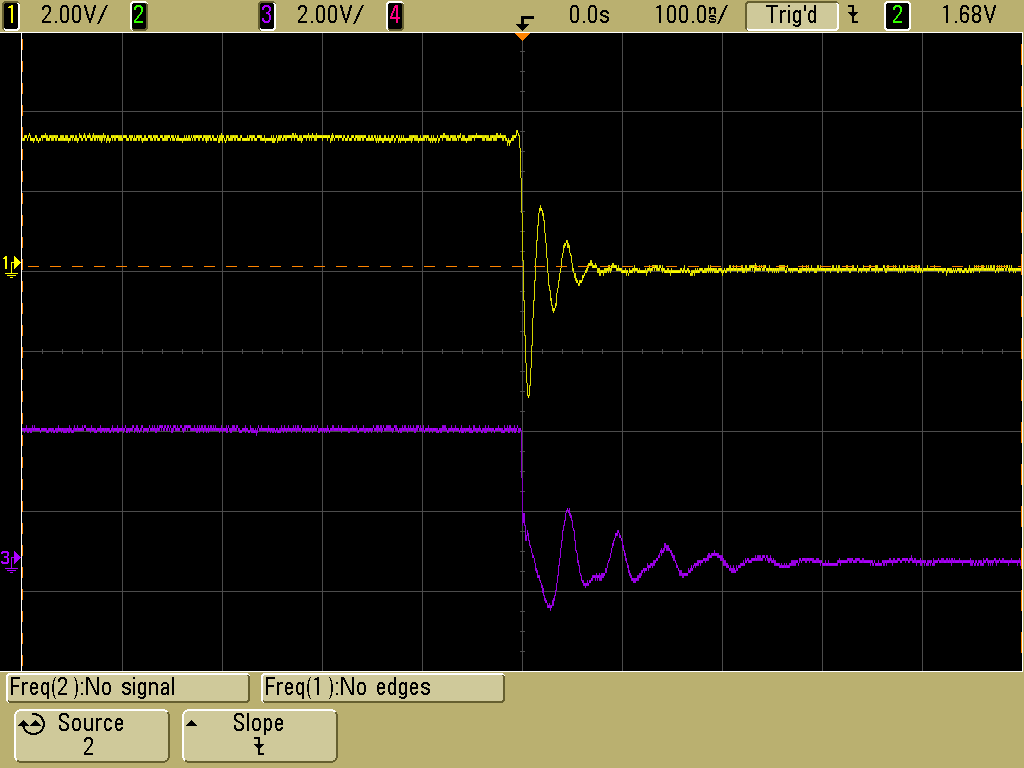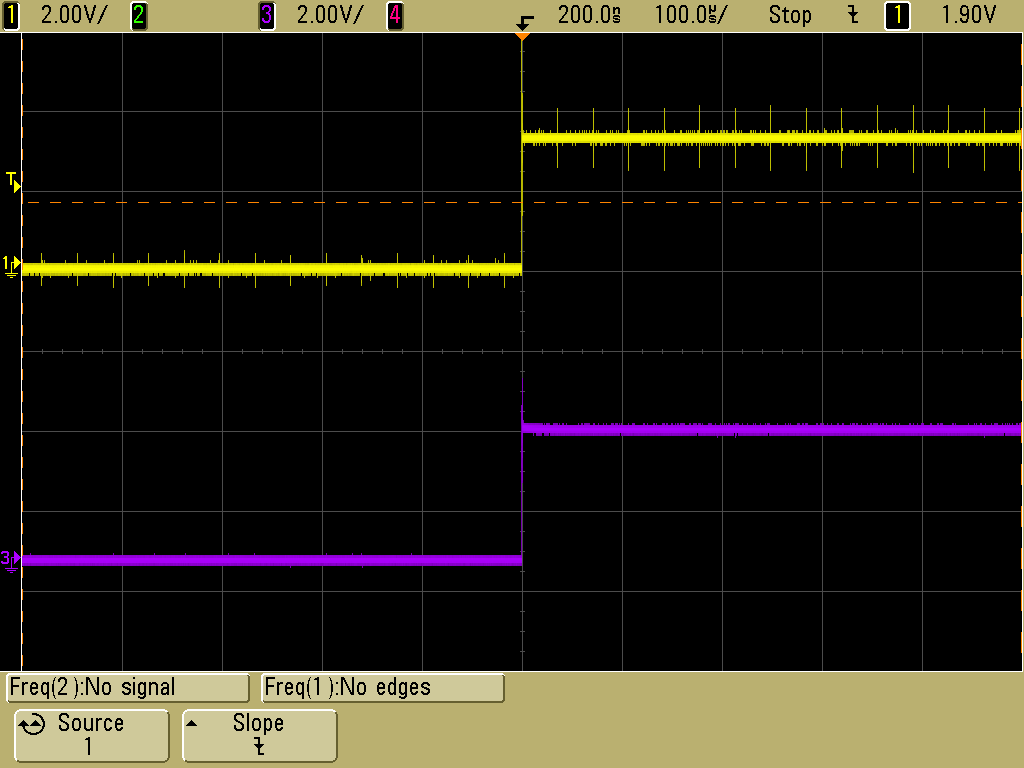Dear,
I'm using 74ALVC244Pw as output buffer for synchronisation signal 25Hz and 25kHz.
Line are used 2 by 2, delay between these 2 signal must be reduce, so I have chosen a fast logic.
74ALVC244PW is OK for speed, but there are overshoot on the output. Overshoot level is 70% : 5V for a 3.3 TTL logic. Ouput capacitor is 100pf for ESD.
How can I reduce overshoot with modifications as low as possible. I may increase output capacitor ?
Regards,
Aymeric



